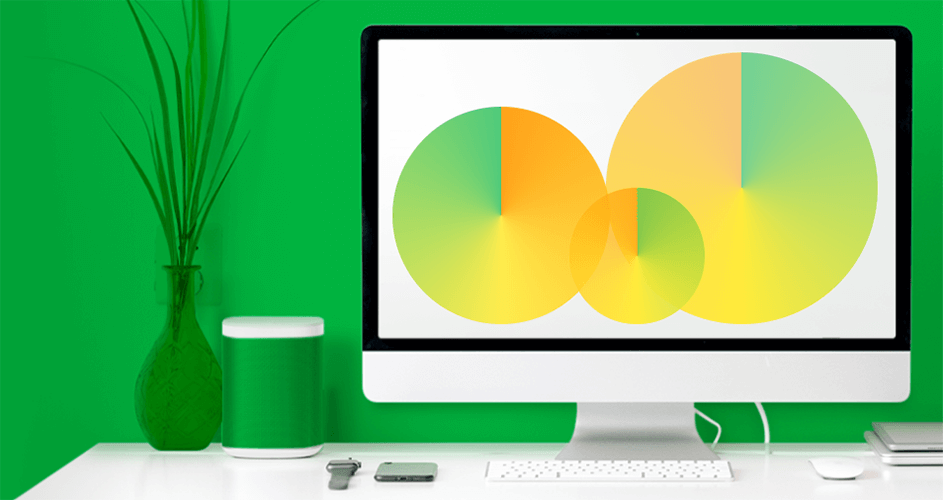
Eine bekannte Methode zum Erstellen sich wiederholender Hintergrundmuster ist die Verwendung
linearer Verläufe. Bei Verwendung für denselben Zweck conic-gradient()ist jedoch deutlich weniger CSS erforderlich. Dieser Vorteil konischer Gradienten wird im Artikel anhand mehrerer Beispiele aus der Leah Veru- Galerie veranschaulicht .
Wir müssen überlegen
- Verzierung der Pyramiden ,
- ,
- ,
- ,
- .
, Firefox .
75 Firefox, 7 , , about:config, layout.css.conic-gradient.enabled true. — false, .

Firefox 75+
, CSS , Firefox.
. CSS-, .
, , . , 10 linear-gradient(), , , .
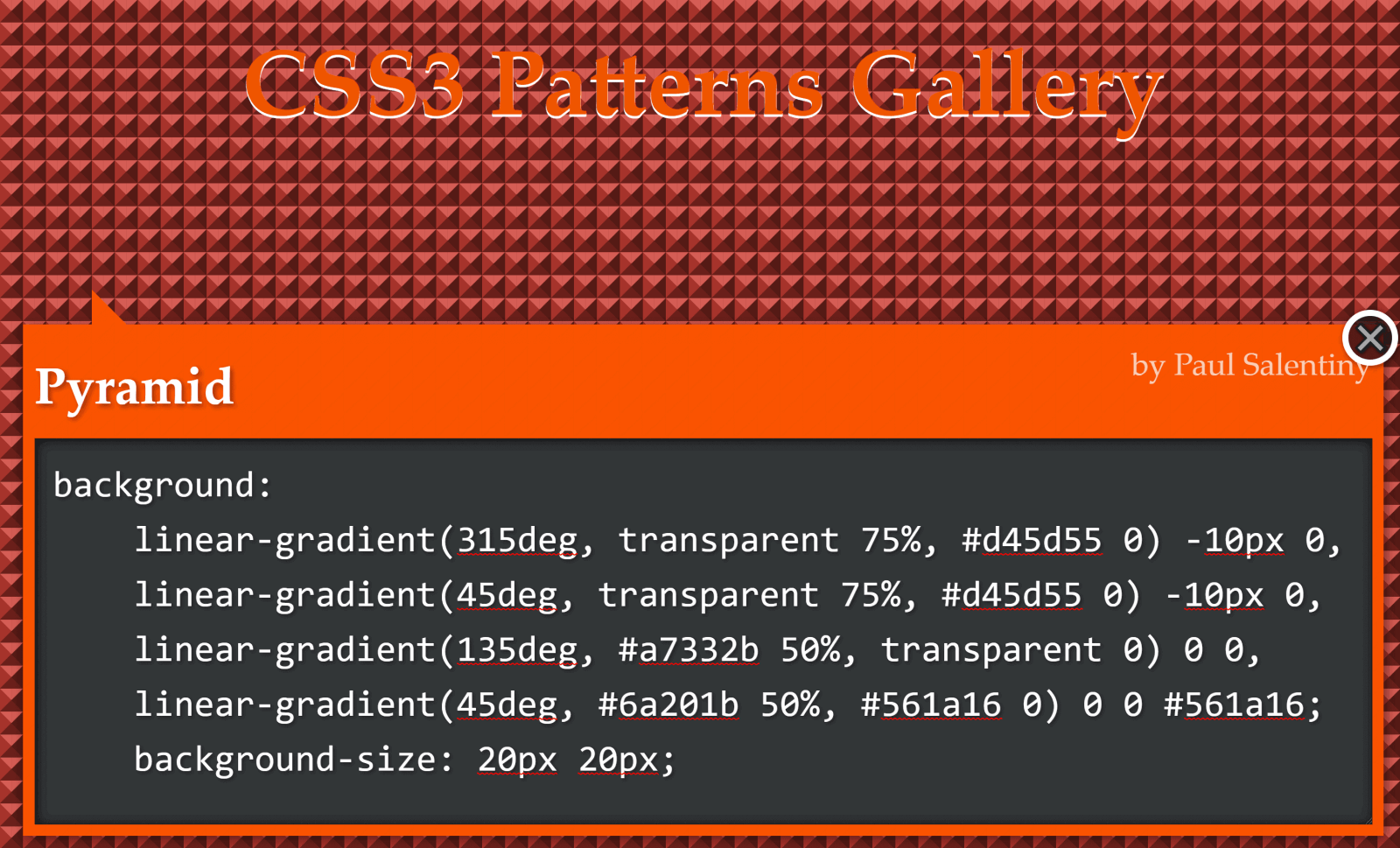
:
background:
linear-gradient(315deg, transparent 75%, #d45d55 0) -10px 0,
linear-gradient(45deg, transparent 75%, #d45d55 0) -10px 0,
linear-gradient(135deg, #a7332b 50%, transparent 0) 0 0,
linear-gradient(45deg, #6a201b 50%, #561a16 0) 0 0 #561a16;
background-size: 20px 20px;
CSS, , , . , . , , , , CSS, . , , , , -, , -, .
CSS- conic-gradient() . , !
, background-size, . , , , , . .
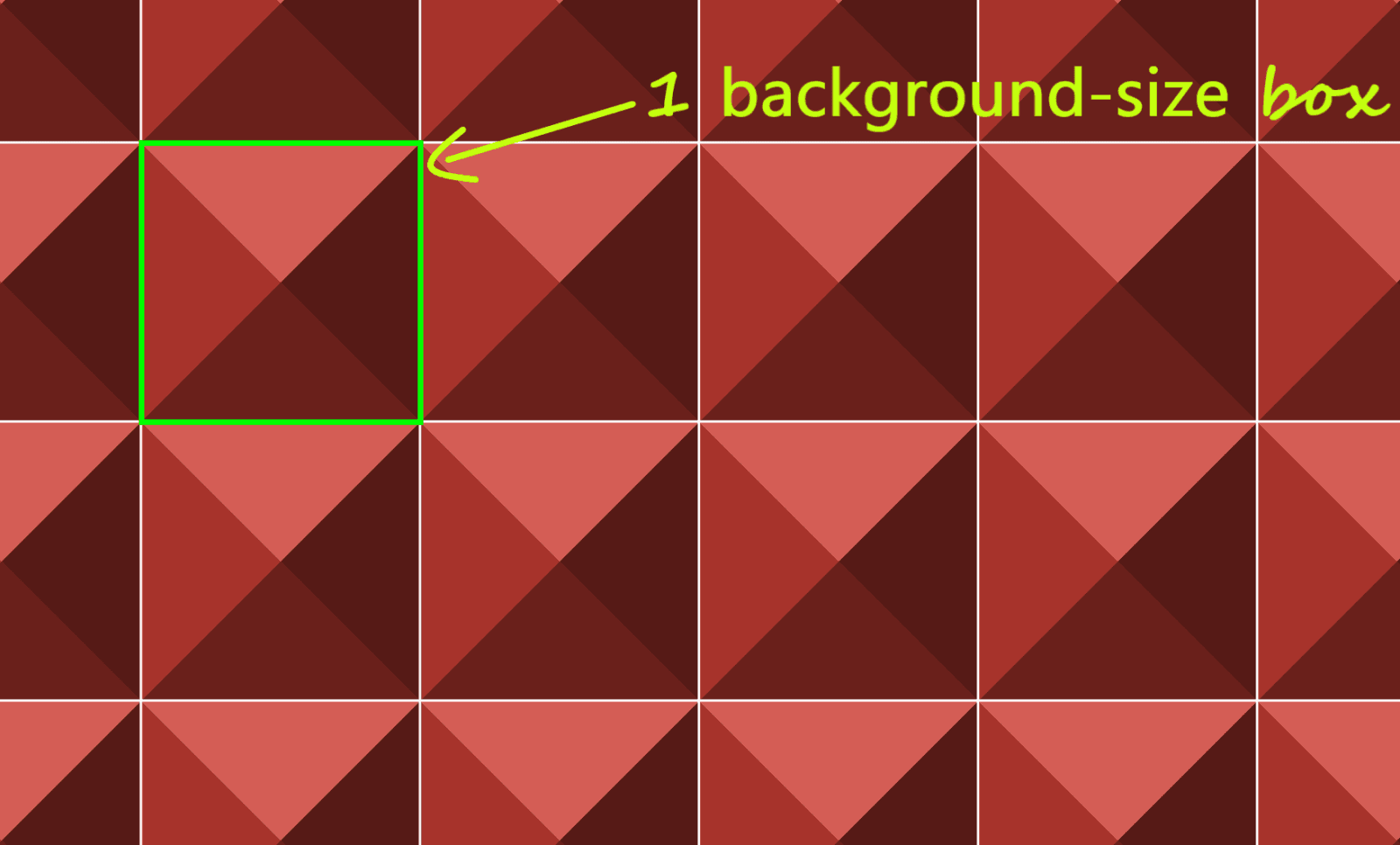
, , 12, . 45° , , (25%) .
, :
$s: 20px;
background:
conic-gradient(from 45deg,
#561a16 25%,
#6a201b 0% 50%,
#a7332b 0% 75%,
#d45d55 0%)
50%/ #{$s $s};
CSS , 103 260. , , .
, .
CodePen:
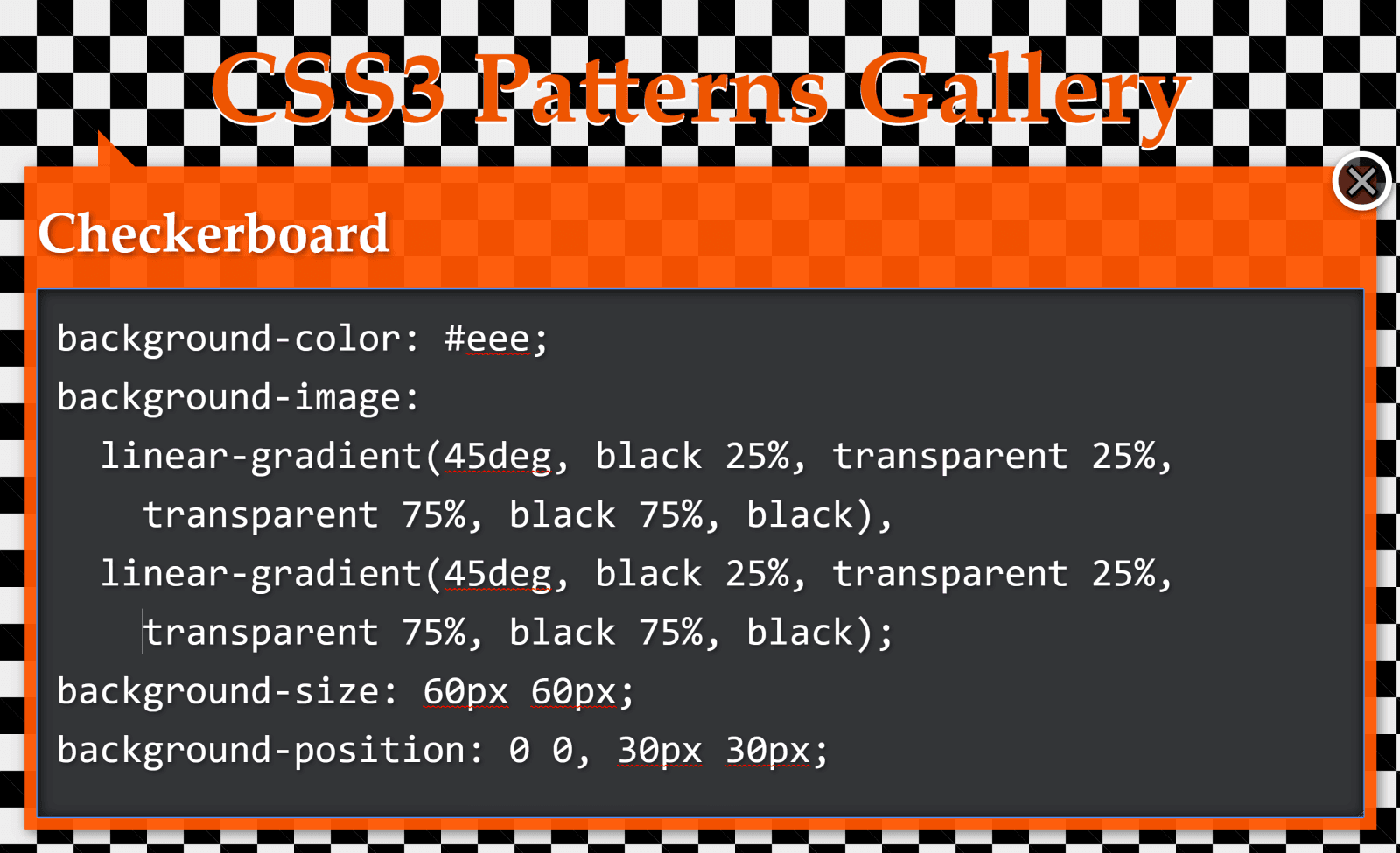
:
background-color: #eee;
background-image:
linear-gradient(45deg, black 25%, transparent 25%,
transparent 75%, black 75%, black),
linear-gradient(45deg, black 25%, transparent 25%,
transparent 75%, black 75%, black);
background-size: 60px 60px;
background-position: 0 0, 30px 30px;, CSS, .
, , , background-size.
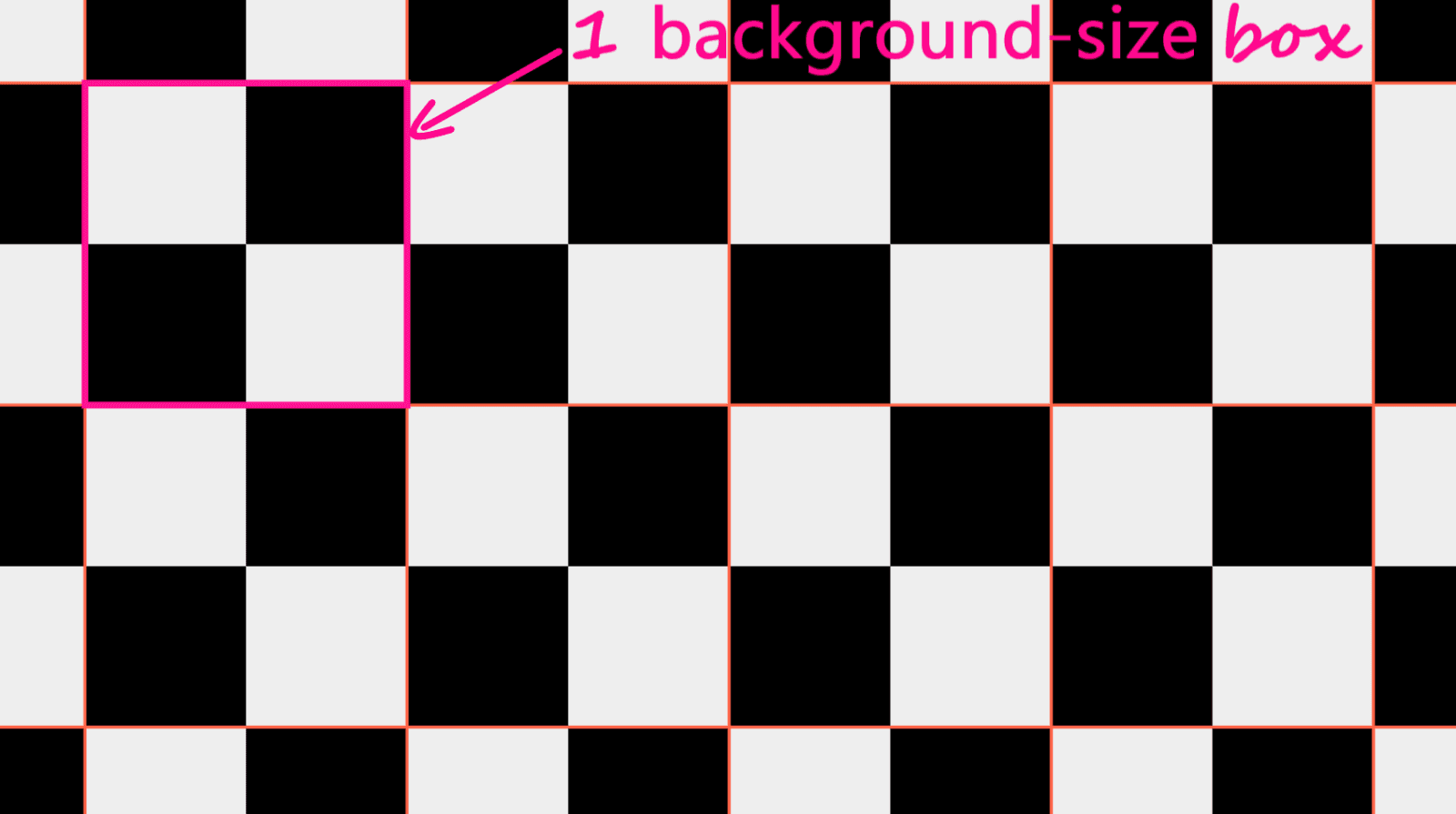
, - , , , , 12. , — -, : - .
0 100% , repeating-conic-gradient(). 76 CSS 263, 70%:
$s: 60px;
background:
repeating-conic-gradient(#000 0% 25%, #eee 0% 50%)
50%/ #{$s $s};CodePen:
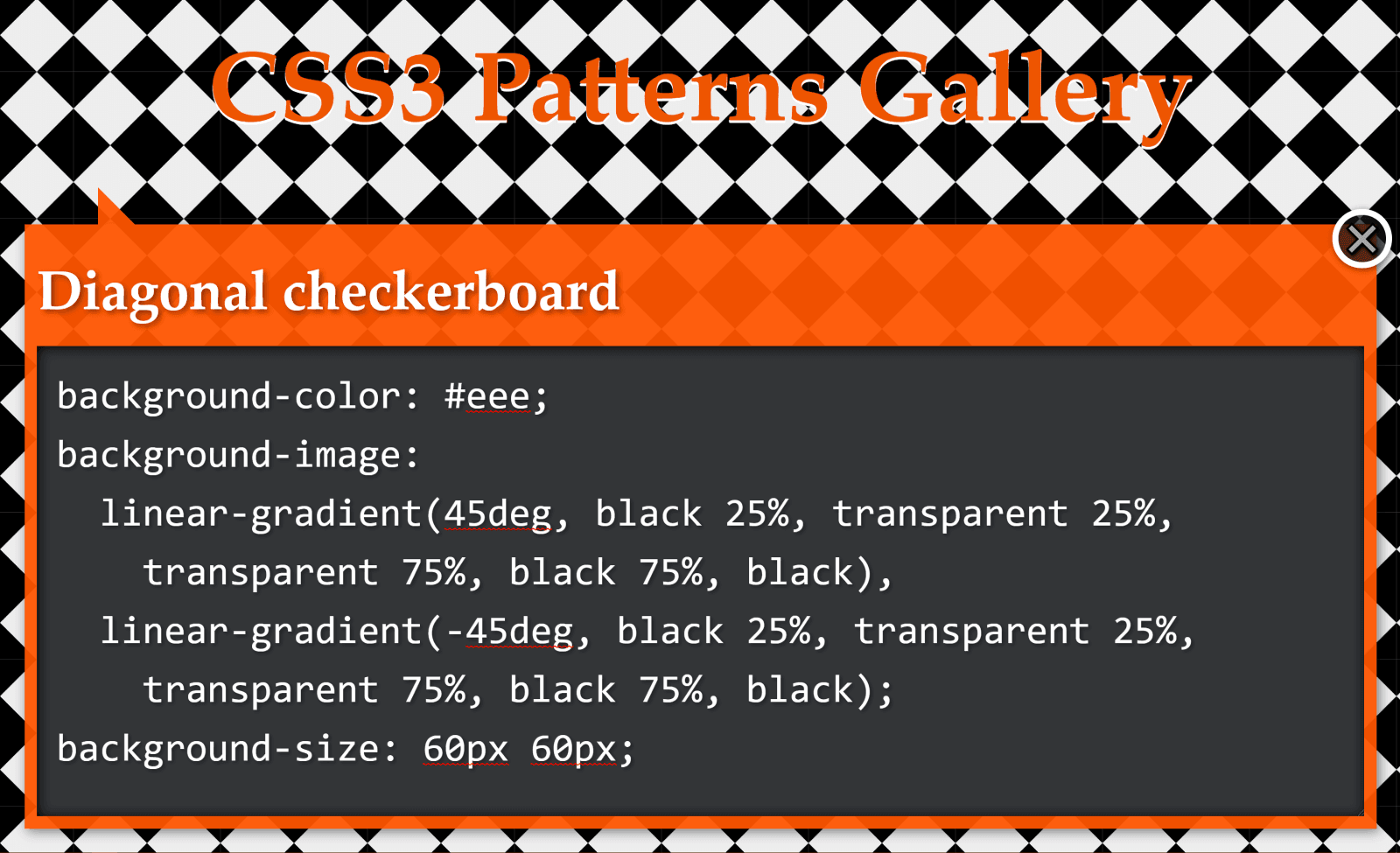
:
background-color: #eee;
background-image:
linear-gradient(45deg, black 25%, transparent 25%,
transparent 75%, black 75%, black),
linear-gradient(-45deg, black 25%, transparent 25%,
transparent 75%, black 75%, black);
background-size: 60px 60px;, :
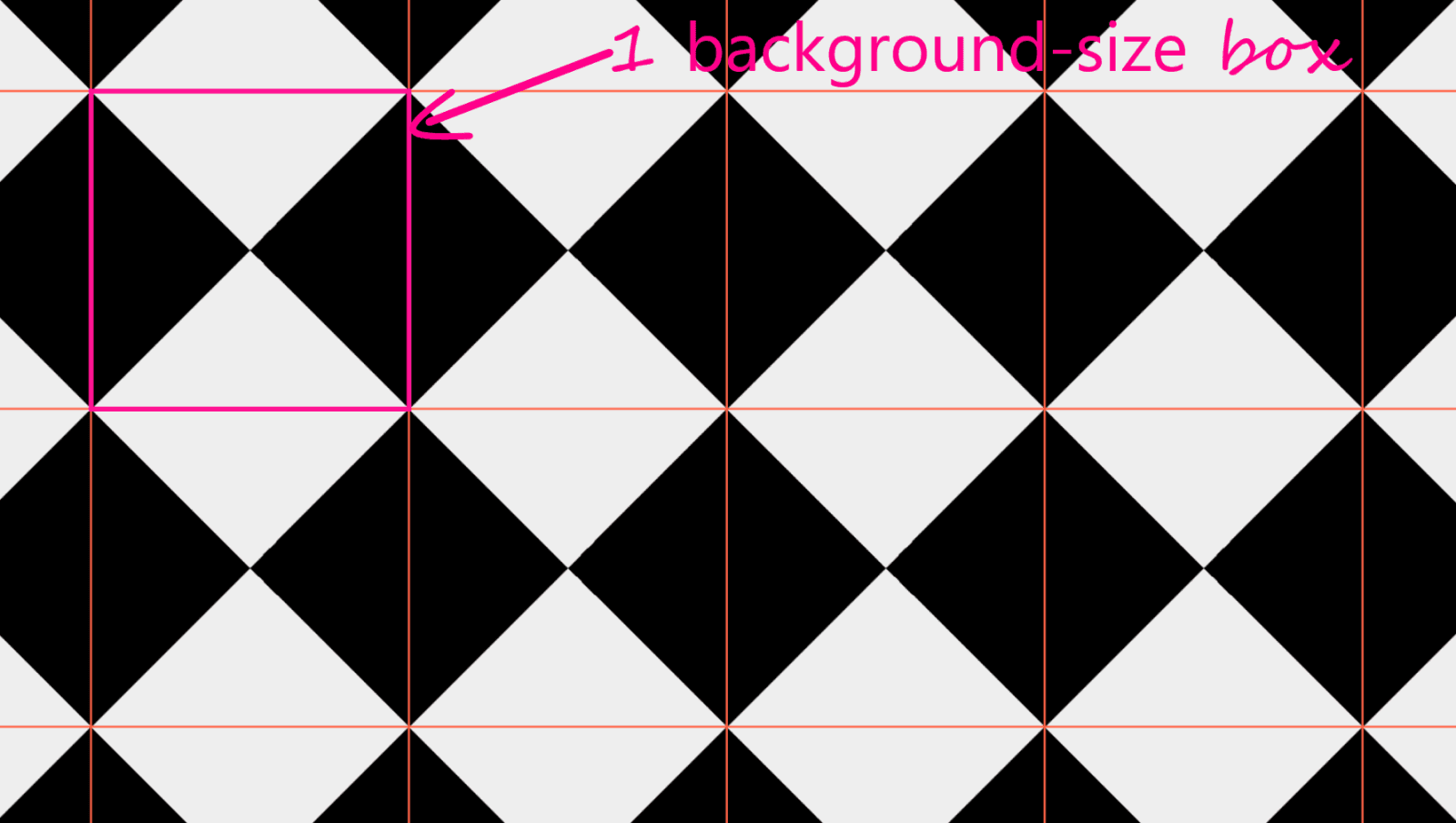
, . , , 45° .
, , :
, , .
, :
b$s: 60px;
background:
repeating-conic-gradient(from 45deg,
#000 0% 25%, #eee 0% 50%)
50%/ #{$s $s};CodePen:
, : 83 SS 229.
( )
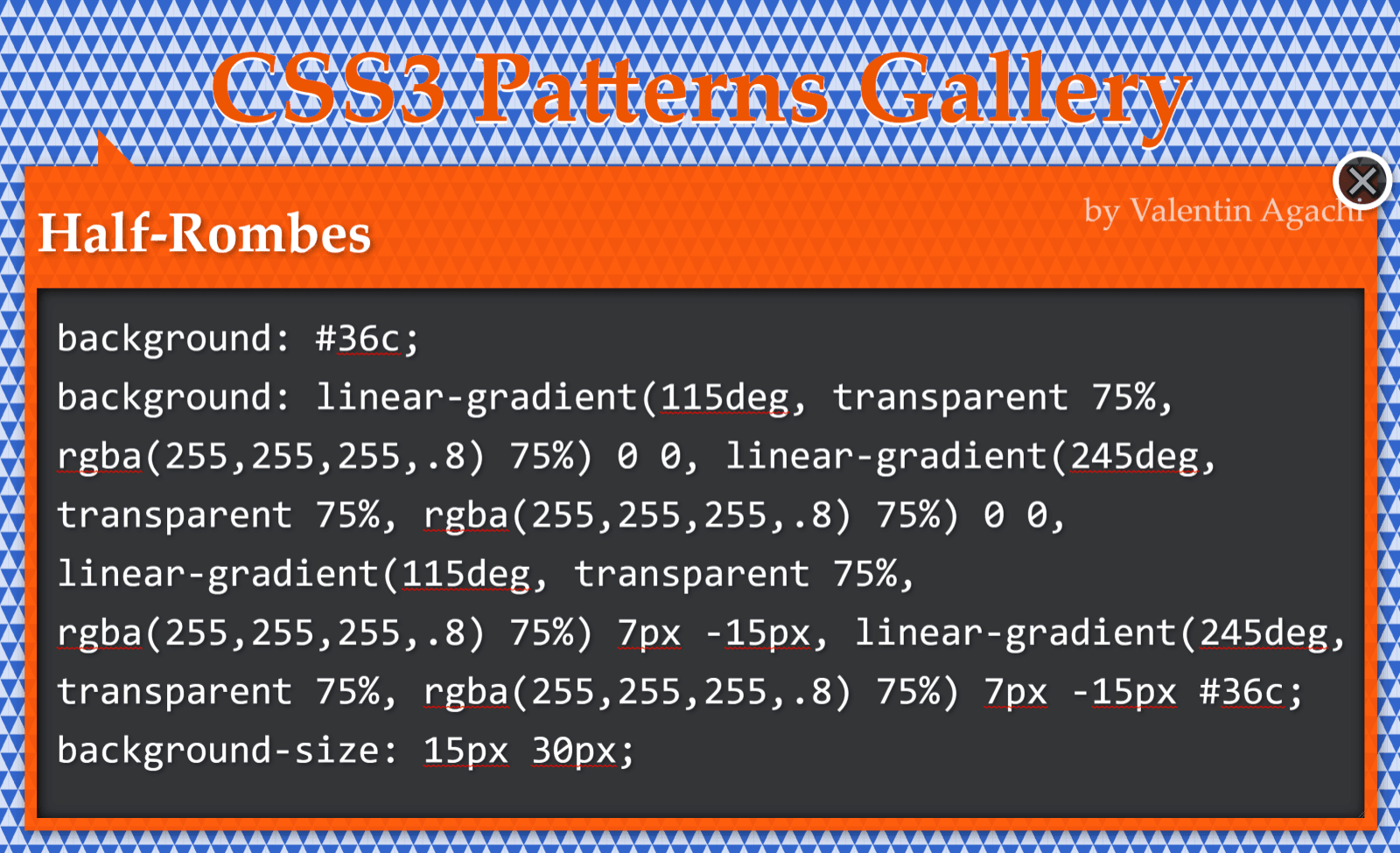
:
background: #36c;
background:
linear-gradient(115deg, transparent 75%, rgba(255,255,255,.8) 75%) 0 0,
linear-gradient(245deg, transparent 75%, rgba(255,255,255,.8) 75%) 0 0,
linear-gradient(115deg, transparent 75%, rgba(255,255,255,.8) 75%) 7px -15px,
linear-gradient(245deg, transparent 75%, rgba(255,255,255,.8) 75%) 7px -15px,
#36c;
background-size: 15px 30px;, , .
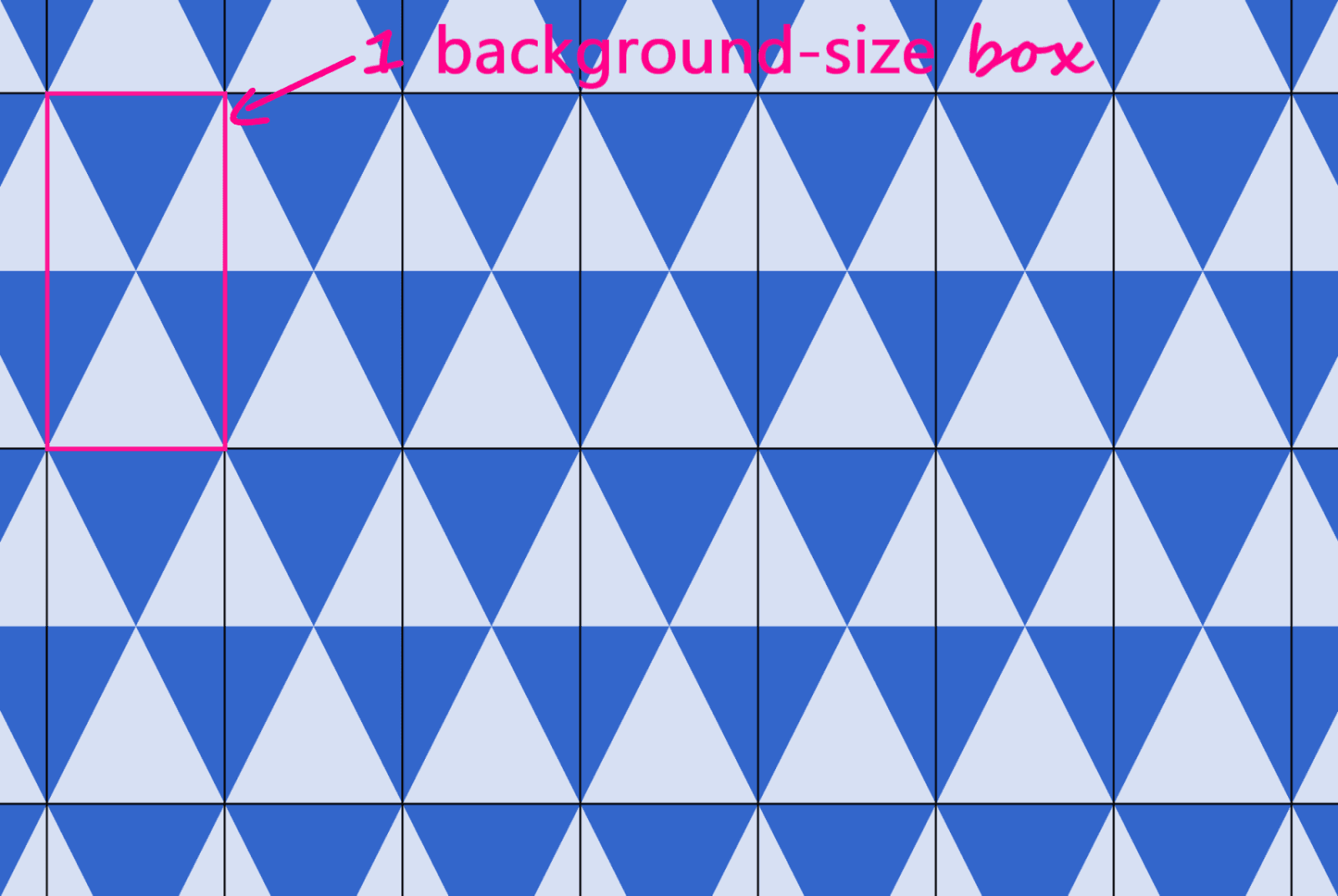
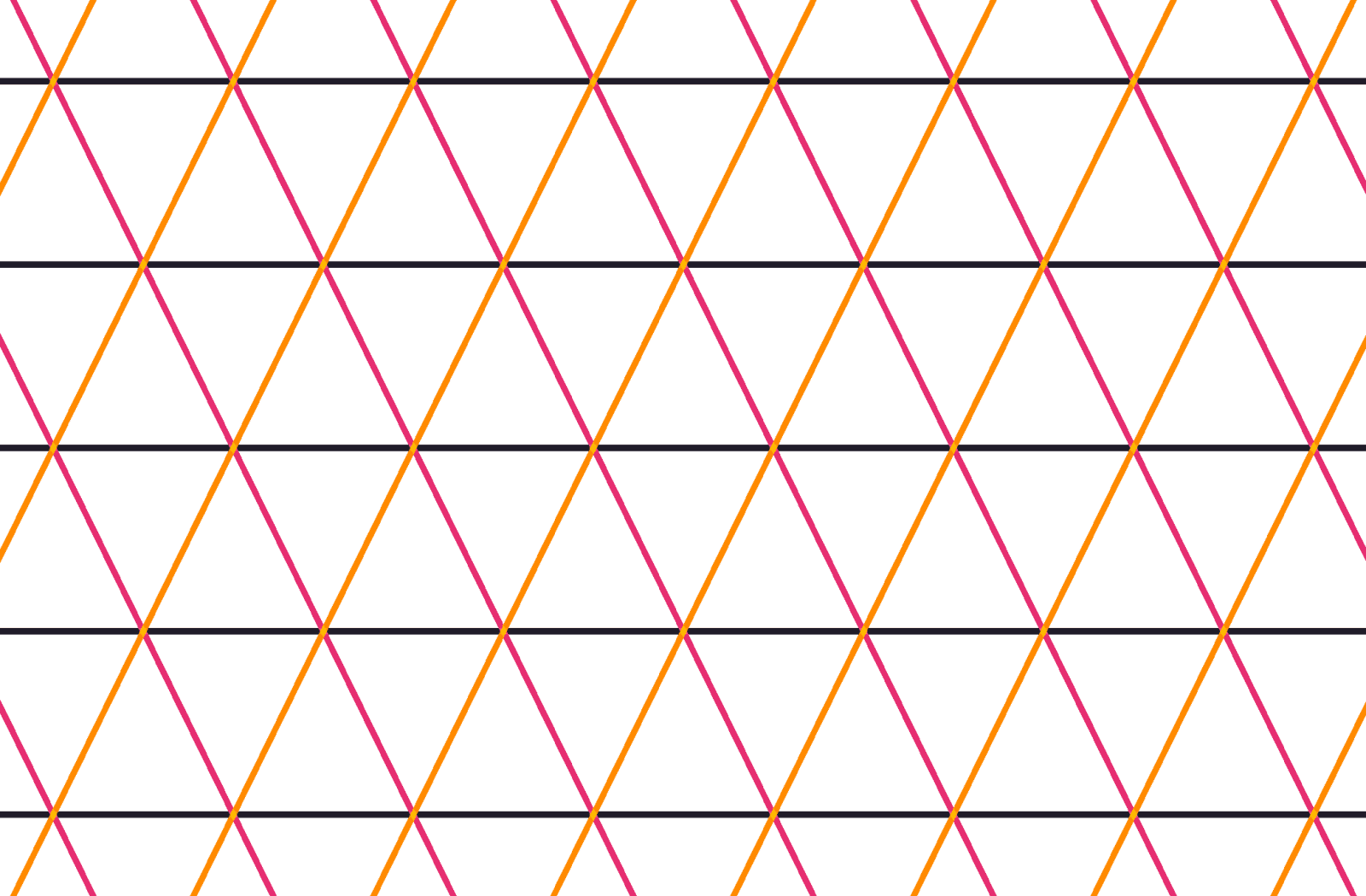
, . , , , .
, β. ( ) α, ( ) — 2·α. ( ) , 180° (50%) . ( ) 180° + α, ( ) — 180° + 2·α, .
, , :
tan(α) = (.5·h)/(.5·w) = h/w;(w) (h) , α β:
α = atan(h/w)
β = 90° - α, :
$w: 15px;
$h: 30px;
$a: atan($h/$w)*180deg/pi();
$b: 90deg - $a;
$c0: #36c;
$c1: #d6e0f5;
html {
background:
conic-gradient(from $b,
$c1 0% $a,
$c0 0% 2*$a,
$c1 0% 50%,
$c0 0% 180deg + $a,
$c1 0% 180deg + 2*$a,
$c0 0%)
0 0/ #{$w $h};
}, 157 CSS 343. :
, , Sass-.
, 2*$a 50% (180deg) $a, , $a 60deg, . CSS 100 :
$a: 60deg;
$b: 90deg - $a;
$w: 15px;
$h: $w*tan($a);
$c0: #36c;
$c1: #d6e0f5;
html {
background:
repeating-conic-gradient(from $b,
$c1 0% $a, $c0 0% 2*$a)
0 0/ #{$w $h}
}:
:

, , , , , , .
, , , background.
(x,y). β, , . , α, 50% (180°) 180° + α.
, , CSS-:
.panel {
background:
conic-gradient(from var(--b) at var(--xy),
var(--c0) var(--a), var(--c1) 0% 50%,
var(--c2) 0% calc(180deg + var(--a)), var(--c3) 0%);
}(--xy), (--b), (--a) --c0 --c3.
.panel {
/* same as before */
&:nth-child(1) {
--xy: 80% 65%;
--b: 31deg;
--a: 121deg;
--c0: #be5128;
--c1: #ce9248;
--c2: #e4c060;
--c3: #db9c4e
}
/* similarly for the other panels */
}Anstatt die Werte der angegebenen Parameter fest zu codieren, können Sie zufällige Werte generieren oder sie mithilfe von CSS- und HTML-Präprozessoren aus dem Objekt abrufen. Im letzteren Fall können Sie Inline-Stile anwenden, die ich in meiner Demo zu Codepen erstellt habe:
In diesem Beispiel conic-gradient()werden CSS-Variablen als Argumente verwendet , sodass die Demo in Browsern, die sie nicht unterstützen, nicht funktioniert.
Hier beende ich den Artikel. Ich hoffe, es hat Ihnen gefallen und Sie haben eine Vorstellung davon, wie Sie Ihr Leben mit sich verjüngenden Verläufen erleichtern können.